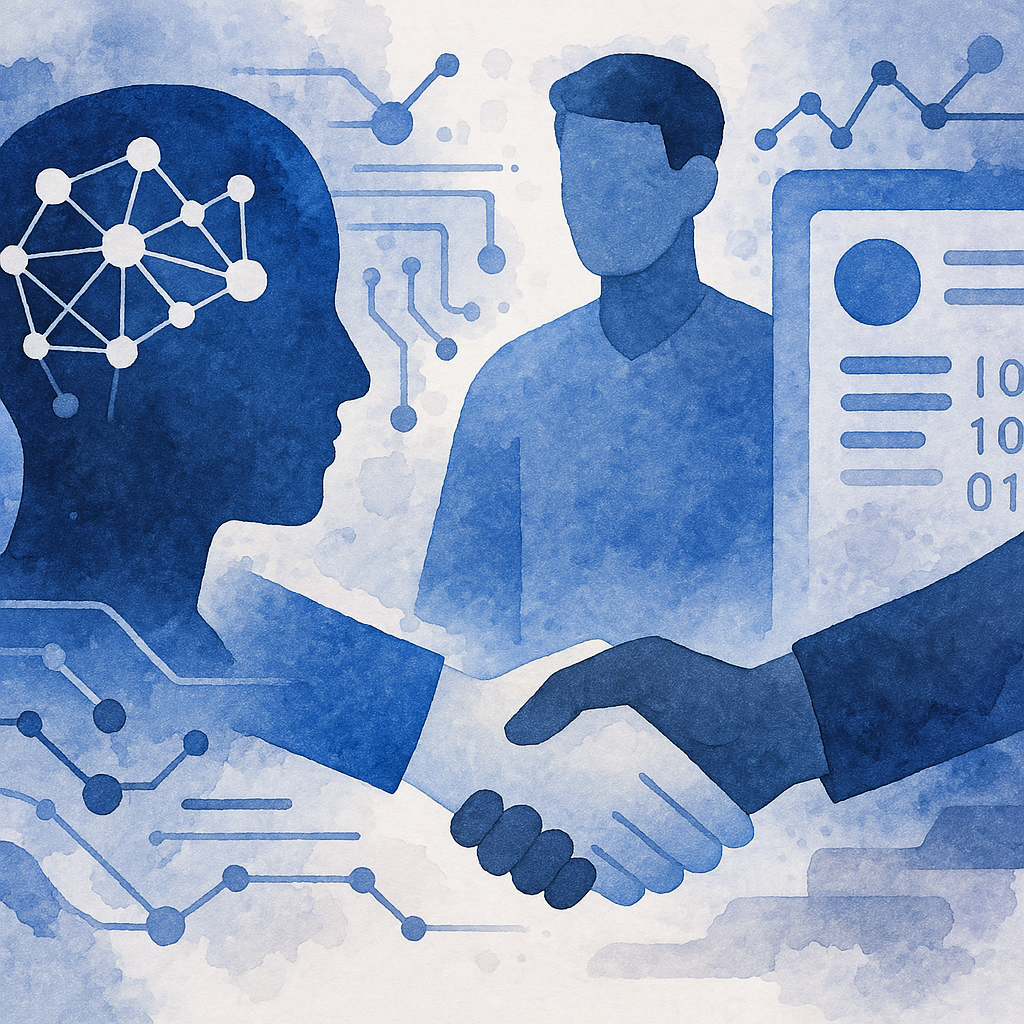Key Insights:
- The Evolution of AI in the Workplace
- Why HR Needs an AI Strategy
- The Role of HR in Responsible AI Adoption
- Real-World HR Use Cases for AI
- The Risks of Misuse
- Choosing the Right Tools
- The Future of HR + AI

In today’s rapidly evolving workplace, artificial intelligence (AI) is no longer a futuristic concept—it’s a present-day reality. But with great power comes great responsibility. That’s why HumCap, a leading provider of HR support in Plano and Dallas, TX, recently hosted a webinar titled “AI & HR: Co-Existing Responsibly” featuring Corey Kirkendoll, CEO of 5K Technical Services.
Here’s a recap of the key takeaways from the session, designed to help business and HR leaders navigate the intersection of technology and human capital with confidence.
The Evolution of AI in the Workplace
AI has been around for decades, but its adoption has skyrocketed in recent years. As Corey Kirkendoll pointed out, ChatGPT reached 100 million users in just two months—faster than any other platform in history. AI is now embedded in everyday tools like email filters, online shopping assistants, and even HR software. But while AI is powerful, it’s not infallible. It requires thoughtful implementation, especially in human resources, where security, data sensitivity, and ethical considerations are paramount.
Why HR Needs an AI Strategy
AI is not here to replace HR—it’s here to enhance it. But to do that effectively, organizations must define a clear AI strategy. That means aligning AI use with business goals, identifying department-specific applications (e.g., recruiting, compliance, employee engagement), and most importantly, establishing an AI Acceptable Use Policy to guide responsible usage. Without these guardrails, companies risk data breaches, biased decision-making, and even legal challenges.
The Role of HR in Responsible AI Adoption
HR professionals are uniquely positioned to lead the charge in responsible AI adoption. Why? Because they understand both the people and the policies.
Here’s how HR can take the lead:
- Create an AI Acceptable Use Policy
This policy should outline which AI tools are approved for use, how employee and customer data should be handled, what constitutes acceptable prompts and outputs, and enforcement measures for misuse. HumCap and 5K Technical Services recommend including this policy in employee onboarding and revisiting it regularly as tools evolve. - Train Your Team
Everyone in your organization should have a “minor in AI,” as Corey put it. That means understanding how to use AI tools effectively, ethically, and securely. Training should be tailored by department—what works for HR may not apply to sales or IT. - Start Small, Then Scale
Don’t try to overhaul your entire HR function overnight. Begin with low-risk, high-impact use cases like drafting job descriptions, screening resumes, summarizing meeting notes, and creating onboarding materials. Once you see success, expand your AI applications thoughtfully.
Real-World HR Use Cases for AI
We’re already seeing several practical ways HR teams are currently using AI:
- Job Description Enhancement: Transforming compliance-heavy descriptions into engaging job postings tailored to specific audiences.
- Resume Matching: Comparing candidate resumes to job requirements using AI to identify best-fit applicants.
- Interview Prep: Generating interview questions based on job descriptions and candidate profiles.
- Document Drafting: Creating NDAs, offer letters, and performance review templates in seconds.
These tools save time, reduce bias, and improve consistency—but only when used with human oversight.
The Risks of Misuse
AI is a powerful assistant, but it’s not perfect. The keyword here is assistant. Not replacement. There are several AI risks HR leaders must be aware of:
- Hallucinations: AI can generate false or misleading information if not prompted correctly.
- Bias: AI models can reflect the biases of their training data or developers when not implemented properly.
- Data Privacy: Free AI tools may use your data to train their models unless you opt for paid, secure versions. If it’s free, there is a reason.
- Over-Reliance: Employees may become too dependent on AI, losing critical thinking and communication skills.
To mitigate these risks, always trust but verify AI outputs and ensure your team understands the limitations of the tools they’re using.
Choosing the Right Tools
Not all AI tools are created equal. The webinar provided a comparison of popular large language models (LLMs) like ChatGPT, Claude, and Gemini, each with different strengths. For example, ChatGPT-4 excels at general-purpose tasks and summarization. Claude is known for creative writing and nuanced responses. Gemini offers strong integration with Google Workspace. The key is to choose tools that align with your HR goals and data security requirements.
The Future of HR + AI
As Corey emphasized, “Today is the worst AI you’ll ever see—because tomorrow it will be better.” That means HR professionals must stay curious, adaptable, and proactive. AI isn’t just a trend—it’s a transformation. And HR has a critical role to play in ensuring that transformation is ethical, secure, and human-centered.
Watch the Full Webinar
Want to see the live demo and hear more insights from Corey and HumCap?
Click here to watch the full recording of “AI & HR: Co-Existing Responsibly.”
Need Help with HR or AI Strategy?
Whether you’re looking for HR support in Plano, HR help in Dallas, TX, or guidance on implementing AI responsibly, HumCap is here to help.
Contact us today to:
- Ask questions about the webinar
- Get help drafting your AI Acceptable Use Policy
- Access the tools and templates shared during the session
Let’s build a smarter, safer future for HR—together.